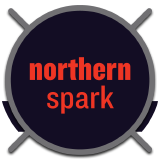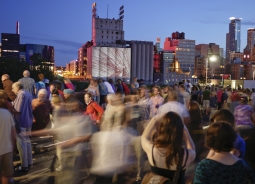A Preview of In Habit
Looking for a way to experience the energy of Northern Spark before Saturday night? Come see an early performance of Annicha Arts’ In Habit: Living Patterns ! The group has choreographed a 9-hour outdoor performance piece for Northern Spark, and will have two 1- hour pre-festival performances. If you’re interested in seeing their work without the masses, make your way to the Central Avenue Bridge Underpass at 9pm on Thursday or Friday evening. The energy and thought put into the choreography of this piece will seriously amaze you!
Annicha Arts members describe their work below:
This production is inspired by the south Indian tradition of drawing kolams. A daily and aesthetic practice that is ephemeral in nature, kolams are drawn with rice powder often at the doorstep of a home, dissolving over the course of the day after being walked over repeatedly by a home’s inhabitants and visitors alike. The art of drawing a kolam begins with a number of dots that are used to create an intricate symmetrical design.
As a practice that describes a manner of inhabiting space, the aesthetics of the kolam guide the structure of this production, set in an urban outdoor environment that presents a canvas of patterns in itself. In Habit: Living Patterns is based on 16 “dots” or segments, each commenting on different aspects of the collectively learned habits and behaviors that emerge in everyday life. Each dot is an interrogation of the patterns that exist in our bodies and in our environments. As a gesture of collective self-reflection and accountability, this project asks, if both individuals and institutions are habit creators, then what are our choices? Beyond questioning individual habits and introducing simple technical solutions, what does it mean to be collectively accountable to ourselves, to those around us, and to the environment in which we live?



